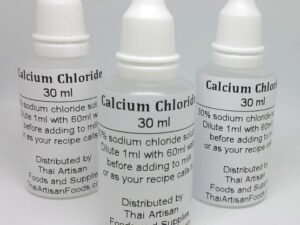Description
Ethanol: A Versatile Compound Powering Our World
Ethanol, a simple alcohol with the chemical formula C2H5OH, is more than just the intoxicating ingredient in alcoholic beverages. It’s a versatile compound with a wide range of applications, from fuel and industrial solvent to antiseptic and ingredient in various consumer products. Understanding its properties, uses, and implications is crucial in a world increasingly focused on sustainable solutions.
What is Ethanol?
Ethanol, also known as ethyl alcohol or grain alcohol, is a colorless, volatile, and flammable liquid. It possesses a characteristic odor and a slightly sweet taste. Importantly, it is miscible with water and many organic solvents, making it a valuable ingredient in numerous chemical processes.
Production Methods: From Fermentation to Fossil Fuels
Ethanol can be produced through two primary methods:
- Fermentation of Biomass: This traditional method involves the fermentation of sugars extracted from various biomass sources, such as corn, sugarcane, wheat, and even cellulose. Yeast is used as a catalyst to convert these sugars into ethanol and carbon dioxide. This “bioethanol” is often touted as a renewable alternative to fossil fuels.
- Hydration of Ethylene: This industrial process involves reacting ethylene (derived from petroleum or natural gas) with water at high temperatures and pressures in the presence of a catalyst. This method yields synthetic ethanol, which is primarily used in industrial applications.
Uses and Applications:
Ethanol’s diverse properties lend themselves to a wide array of applications:
- Fuel Additive and Alternative Fuel: Ethanol is widely used as a fuel additive in gasoline, increasing octane levels and reducing harmful emissions. In some regions, it is even used as a primary fuel source, particularly in flex-fuel vehicles designed to run on blends containing up to 85% ethanol (E85).
- Solvent: Ethanol’s miscibility with both water and organic solvents makes it an excellent solvent for various substances, including resins, paints, varnishes, and disinfectants.
- Disinfectant and Antiseptic: Due to its antimicrobial properties, ethanol is a common ingredient in hand sanitizers and antiseptic wipes, effectively killing bacteria and viruses.
- Industrial Raw Material: Ethanol serves as a building block for the synthesis of numerous other chemicals, including acetic acid, acetaldehyde, and ethyl ether.
- Beverage Industry: Of course, ethanol is the key component in alcoholic beverages like beer, wine, and spirits.
Advantages and Disadvantages:
Ethanol presents both advantages and disadvantages:
Advantages:
- Renewable (Bioethanol): Ethanol produced from biomass offers a renewable alternative to fossil fuels, reducing reliance on finite resources.
- Reduced Emissions: Ethanol blends in gasoline can lower greenhouse gas emissions and improve air quality compared to pure gasoline.
- High Octane: Ethanol’s high octane rating enhances engine performance.
- Biodegradable: Ethanol is biodegradable, minimizing its environmental impact in case of spills.
Disadvantages:
- Food vs. Fuel Debate: The use of food crops like corn for ethanol production raises concerns about food security and rising food prices.
- Land Use: Large-scale biofuel production can require significant land area, potentially leading to deforestation and habitat loss.
- Energy Balance: The energy required to produce ethanol (especially from corn) can sometimes be close to or even exceed the energy contained within the ethanol itself, questioning its overall energy efficiency.
- Corrosion: High concentrations of ethanol can corrode certain engine components.
The Future of Ethanol:
The future of ethanol hinges on addressing its challenges and maximizing its potential. Research is focused on:
- Developing more efficient and sustainable production methods: This includes utilizing non-food feedstocks like cellulosic biomass (e.g., agricultural waste, switchgrass) for ethanol production.
- Improving engine technology: Developing engines specifically designed to run on higher ethanol blends.
- Optimizing land use and minimizing environmental impact: Implementing sustainable farming practices and carefully considering the environmental consequences of biofuel production.
Conclusion:
Ethanol is a multifaceted compound with a significant impact on our world. While challenges related to its production and utilization exist, ongoing research and development are paving the way for a more sustainable and efficient future for ethanol. By carefully considering its benefits and drawbacks, we can leverage its potential to contribute to a cleaner, more energy-secure world. As we strive for innovative solutions to address climate change and resource depletion, understanding the complexities of ethanol remains crucial.












Reviews
There are no reviews yet.